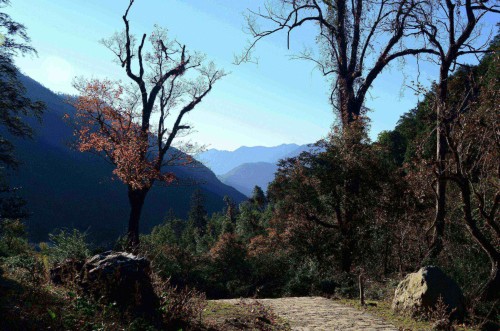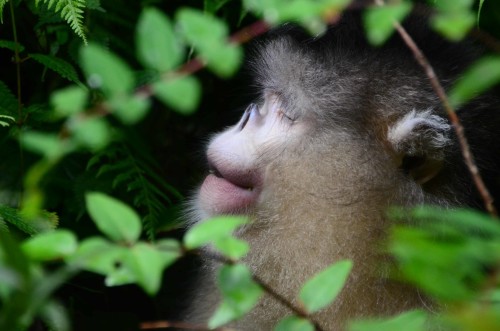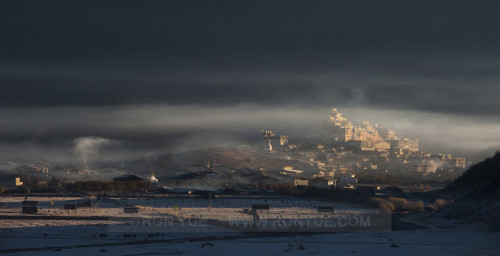Everyone has heard of Shangri-La. Even for those who have not read James Hilton’s classic Lost Horizon, the name evokes visions of an earthly paradise tucked away amongst soaring mountain ranges, where humans live long and peaceful lives amidst pristine, otherworldly surroundings.
In northwest Yunnan there is a Tibetan town, historically known as Zhongdian. Perched at the south-eastern edge of the Tibetan Plateau and astride the main route to Tibet proper, the small town has long been a trading post and meeting point between Yunnan’s lowlands and highlands. Zhongdian’s compact old town was once filled with thick-walled Tibetan houses, yaks grazed in verdant fields around the town and stupas decorated the surrounding hillsides – undeniably picturesque, but still a far cry from Hilton’s fictional paradise.
Just over ten years ago Zhongdian’s enterprising mayor decided that since no one knew where Shangri-La was, it might as well be in Zhongdian. A pretext was fabricated (certain geographical features outside the town are said to resemble those mentioned in the novel) and Zhongdian was duly renamed Shangri-La, or Xianggelila in Chinese.
The new name and a new airport spurred a building boom that has seen old Zhongdian transformed into a somewhat ugly, modern town. Then, in early 2014 a devastating fire burnt much of the old town to the ground. Whatever faint resemblance the place may once have had to the Shangri-La of fiction, it has now gone for good.
So did the idea of Shangri-La go up in flames along with Zhongdian’s timber-framed old town?
The north-westernmost region of Yunnan is formally called the Diqing Tibetan Autonomous Prefecture. Shaped like a triangle balancing on one point, the region is composed of three counties; Shangri-La (with Zhongdian/Shangri-La at its centre) in the east, Weixi in the west and Deqin at the uppermost tip of the triangle. If you are looking for Shangri-La, stop briefly in Zhongdian/Shangri-La, if you must, but make sure you leave time to explore Diqing’s beautiful hinterland. While it might not exactly match Hilton’s description, the region is so lovely and holds such natural bounty and variety that any such qualms will quickly be forgotten.
Diqing is home to at least ten ethnic minorities. The largest of these is Tibetan, but there are also the Lisu, Naxi, Bai, Yi, Hui, Pumi, Miao, Nu and Drung, among others. Each speaks its own language, practices its own and religion, and wears – for the everyday, not for tourists’ benefit – its own traditional clothing. People are friendly and welcoming, especially in the remoter parts of Diqing where tourists are still rare.
Diqing straddles one of the world’s most bio-diverse regions, the so-called Three Parallel Rivers, named for a short-range geographical accident that sees three of Asia’s great rivers – the Yangtze, the Mekong, and the Salween – churn through lush, parallel valleys for several hundred kilometres. The Three Parallel Rivers region is home to many exotic and endemic species of flora and fauna. One of the most endearing is the Yunnanese snub-nosed monkey, one of the rarest primates on earth. Incredibly, it is easy to spot (and photograph) in a sanctuary of old-growth forest that lies in the mountains between the Yangtze and Mekong valleys.
The region’s human heritage and geography is no less rich and varied with a long list of little-visited, yet spectacular attractions. Each Sunday in the tiny village of Cizhong, a Tibetan priest holds mass in a nineteenth-century church built by French missionaries. Further north, there is the massive Meili Snow Mountain range. The highest peaks rise to over 6,000 metres, making for impressive prominence over the river valleys to the east and west. The highest peak is sacred 6,740-metre-tall Kawagebo, which – in deference to local religious beliefs – has never been summited.
While the mountaintops are left to local gods, it’s still possible to feel the magic of travelling through the mountains and climbing towards distant peaks on the ascent from lowland Yunnan to Diqing. Some may opt to fly straight into Zhongdian/Shangri-La, at the risk of both altitude sickness and a dislocating sense of culture shock. However, far better to travel overland, slowly acclimatising to the thinner air and absorbing the gradual change in your surroundings as the familiar trappings of modern life give way to something gentler and altogether rarer. By the end of your journey, you might just feel that you have, indeed, glimpsed Shangri-La after all.
If you would like to go in search of Shangri-La for yourself, you may want to take a look at this travel idea here.



